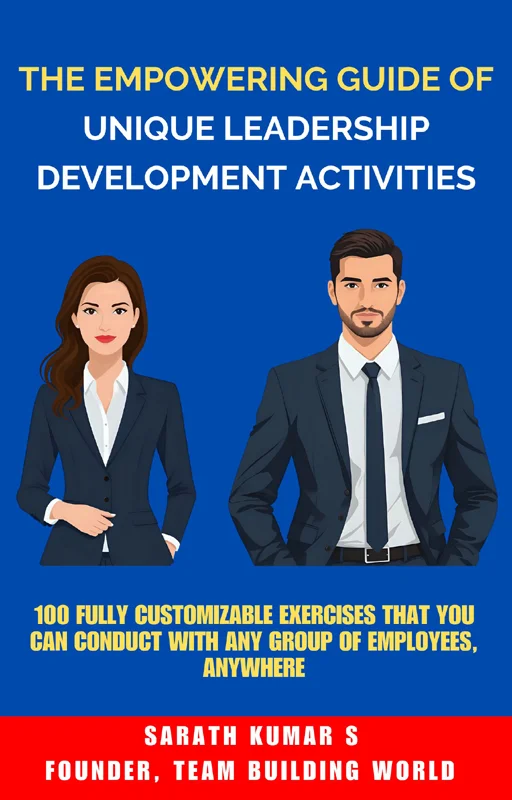12 Cultural Awareness Activities for Adults
Are you in search of some cultural awareness activities for the workplace?
Cultural awareness is an essential skill in our increasingly diverse world. It allows individuals to understand and appreciate the differences among people from various backgrounds, promoting empathy as well as inclusivity. As adults, it is important for us to continuously develop our understanding of different cultures to foster a more harmonious society.
In this article, we have compiled a list of 12 cultural awareness activities you can try in your workplace. These exercises can help promote cultural sensitivity and understanding among your team members, fostering a more inclusive work environment.
12 Cultural Awareness Activities for Adults
Here are some exercises that can help you enhance your understanding of different cultures and promote diversity in your workplace.
#1. Diversity Dialogue
This activity aims to break the ice and encourage cultural sharing among employees. It promotes open communication and allows individuals to learn more about their colleagues’ cultural backgrounds.
Time: 10-20 minutes
Materials: None
Participants: 3-8 individuals per group
Instructions
- Ask each team member to share an interesting fact or tradition from their culture.
- Encourage open discussion and questions to foster understanding as well as curiosity. For example, a team member from India can share about the significance of Diwali and its celebrations.
- Rotate turns and allow everyone to participate.
Debrief
During the debrief, discuss the various cultural insights shared during the activity. Reflect on the diversity within the team and the importance of cultural understanding in the workplace.
You can also read: The 10 Best Diversity, Equity, and Inclusion (DEI) Books
#2. Potluck
A potluck is a great way to celebrate the diverse foods and traditions of different cultures. It promotes cultural exchange and appreciation while also providing an opportunity for team bonding.
Time: You decide
Materials: A shared space for food display and eating utensils
Participants: Any number of people per group
Instructions
- Invite the members to bring a dish from their culture to share with the group.
- Encourage them to briefly introduce the dish and its significance in their culture.
- Allow everyone to sample each dish while engaging in conversation about different cultures.
Debrief
Discuss how food can be a unifying factor among different cultures and the importance of trying new things. Highlight the diversity and richness of different cuisines.
You can also read: 14 Best Books on Discrimination in the Workplace
#3. Cultural Sensitivity Workshop
This activity can provide a more structured approach to learning about different cultures. It aims to increase awareness as well as understanding among coworkers while also promoting respect and inclusivity.
Time: You decide
Materials: Presentation slides or handouts
Participants: Any number of people per group
Instructions
- Begin by discussing the importance of cultural sensitivity in the workplace.
- Use presentation slides or handouts to educate the participants on different cultures, customs, beliefs, and values.
- Encourage open discussion and questions throughout the workshop.
Debrief
Reflect on how the information shared can be applied in the workplace to promote inclusivity and understanding. Discuss how cultural differences can be better understood and respected.
You can also read: 10 Cultural Diversity Team Building Activities
#4. Global Perspectives Challenge
This activity aims to provide a glimpse into different cultural experiences and challenges that individuals may face. It helps develop empathy and understanding for other cultures.
Time: 10-20 minutes
Materials: None
Participants: 3-8 people in a group
Instructions
- Divide the participants into groups, assigning each group a specific culture.
- Provide a scenario or challenge based on real-life cultural issues faced by individuals from that culture.
- Ask the groups to discuss and come up with solutions while considering the values and beliefs of the assigned culture.
Debrief
Discuss the different approaches and solutions presented by each group. Reflect on how cultural differences can influence perspectives and problem-solving.
#5. Book Club
A book club is a great way to explore different cultures through literature. It promotes discussion, critical thinking, and empathy towards diverse experiences.
Time: Ongoing (can be monthly or bi-monthly)
Materials: A chosen book related to a specific culture
Participants: Groups of any size
Instructions
- Choose a book that explores the culture of interest.
- Assign readings for each session and set a date for group discussions.
- Encourage the participants to share their thoughts, reflections, and questions about the book and its cultural themes.
Debrief
Reflect on the different perspectives and insights gained from the book club discussions. Discuss how literature can help bridge cultural gaps and promote understanding.
#6. Field Trip
A field trip to a cultural location or event is an excellent way to immerse oneself in a specific culture. It provides a hands-on learning experience that can enhance cultural understanding and appreciation.
Time: Half day or full day (can be adjusted based on the location/event)
Materials: Admission tickets and transportation
Participants: Groups of any size
Instructions
- Choose a cultural location or event that reflects the interests of your group.
- Plan and coordinate logistics such as admission tickets as well as transportation.
- Encourage the group members to engage with the cultural experience and ask questions.
Debrief
Discuss the different aspects of the cultural location/event that stood out to each group member. Reflect on how hands-on experiences can deepen understanding and appreciation for other cultures.
#7. Cultural Storytelling
Storytelling is a timeless tradition that allows individuals to share their unique experiences, customs, and values. A cultural storytelling session provides an open platform for the participants to better understand and appreciate different perspectives.
Time: You decide
Materials: A comfortable setting and optional props or visual aids
Participants: Groups of any size
Instructions
- Invite the group members to prepare a personal story or experience related to their cultural background or heritage.
- Create an inclusive environment where they feel comfortable sharing their stories.
- Encourage the participants to ask questions or share reflections after each story.
Debrief
Discuss the lessons learned from the stories shared. Explain how they can be applied in both personal and professional contexts to foster greater empathy as well as inclusivity.
#8. Power Walk and Talk
A power walk and talk is a fun way to engage in physical activity while also promoting cultural understanding. It provides an opportunity for employees to connect with each other and share their cultural backgrounds.
Time: 10-20 minutes
Materials: Comfortable shoes and water bottles
Participants: Pairs
Instructions
- Plan a route for a brisk walk around the office or nearby location.
- Encourage the participants to pair up with someone from a different cultural background.
- As they walk, ask them to discuss their cultures, traditions, and experiences.
Debrief
Reflect on the diverse backgrounds of employees and how they can contribute to a more inclusive and respectful workplace. Discuss how this activity can promote cross-cultural understanding and communication.
#9. Language Exchange
This exercise is a great way to learn about different cultures and improve language skills. It creates an opportunity for group members to teach each other basic phrases in their native languages.
Time: 10-20 minutes
Materials: None
Participants: Pairs
Instructions
- Ask each participant to come prepared with a list of basic phrases in their native language.
- Pair up the participants with someone who speaks a different language.
- Encourage them to take turns teaching and practicing the phrases with each other.
Debrief
Discuss how learning basic phrases in another language can promote cultural understanding and communication. Reflect on the impact that diverse linguistic abilities can have on the workplace.
#10. Quiz Bowl
A quiz bowl is a fun and interactive way to test knowledge about different cultures. It can also serve as a refresher on key topics covered in previous cultural training sessions.
Time: You decide
Materials: Trivia questions and buzzers (optional)
Participants: 3-8 people in a group
Instructions
- Create a set of trivia questions related to different cultures, including customs, traditions, beliefs, and values.
- Divide the participants into teams and assign each team a buzzer (optional).
- Ask the trivia questions one by one, awarding points for correct answers.
Debrief
Reflect on the importance of continuous learning and understanding of different cultures. Discuss potential topics for future cultural training sessions.
#11. Movie Night
A movie night is a fun and engaging way to learn about different cultures through film. It allows team members to experience diverse perspectives and open up discussions on various cultural topics.
Time: You decide
Materials: A projector or TV and selected movies
Participants: Groups of any size
Instructions
- Choose a selection of movies from different cultures or with themes related to diversity and inclusion.
- Set up a viewing area with comfortable seating.
- After each movie, facilitate a discussion on the cultural aspects portrayed in the film.
Debrief
Reflect on the valuable lessons learned from the movies shown and discuss how they can be applied in both personal and professional contexts. Encourage the team members to share their thoughts and perspectives on the films.
#12. Culture Swap
This interactive activity encourages research, empathy, and understanding of diverse cultures. It also promotes collaboration and communication within the team.
Time: You decide
Materials: Presentation materials
Participants: 3-8 people in a group
Instructions
- Assign each group a different culture to research.
- Give them time to prepare a short presentation on their assigned culture.
- Have the groups take turns presenting and discussing their findings with the other teams.
Debrief
Reflect on the similarities and differences among the cultures presented. Discuss how understanding and respecting diverse cultures can strengthen teamwork as well as collaboration within the workplace.
Want Some Unique Leadership Development Activities?
If you want some unique activities to equip your employees (both in-person and virtual) with leadership skills, qualities, and mindset, you can get my new e-book:
Or Want Some Unique Team Building Activities?
If you want some unique activities for your employees (both in-person and virtual), you can get my new e-book:
Final Words
Creating a culturally diverse and inclusive workplace requires effort, open-mindedness, and ongoing education. By incorporating these activities into your team’s regular routine, you can promote cross-cultural understanding and strengthen relationships among them. Remember to regularly debrief after each activity to reflect on the insights gained and discuss ways to apply them in the workplace. Let’s continue to celebrate diversity and foster a culture of inclusivity in our teams!
FAQ: Cultural Awareness Activities
You might have these questions in mind.
How can these activities benefit my team?
These activities promote cross-cultural understanding, empathy, and inclusivity among team members. They also provide opportunities for personal and professional growth.
How often should I conduct these activities?
It depends on your team’s needs and goals. These activities can be conducted as part of regular team meetings or as standalone sessions. You can also plan them around cultural holidays or awareness months to further engage your team. The most important thing is to consistently promote cross-cultural understanding in the workplace.
Do I need to conduct all of these activities?
No, you can choose the ones that align with your team’s needs and schedule.
Can these activities be conducted virtually?
Yes, most of these activities can be adapted for virtual settings. For example, the language exchange activity can be done using video conferencing tools. The quiz bowl activity can be conducted using online trivia platforms.

